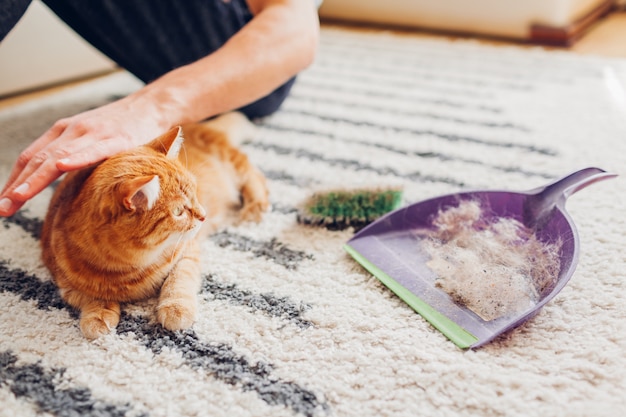Sneezing, runny nose, itchy skin and eye irritation are synonymous with allergy.
According to the University of Valencia, between 15 and 30% of people suffer from cat allergy. But what is it that makes us allergic to our feline friends? Despite what we think, it's not the hair. Most people allergic to cats are allergic to the Fel d 1 protein in their fur, which is released by dander and spread by cats when they lick themselves.
Whether you're thinking about bringing a new furry member into your family, or if you suddenly start to notice some of the symptoms, here are some routines to put into practice to mitigate their effects:
- Cleaning of the feline.

Wash it! There are no contraindications, unless you don't like it. A weekly bath with lukewarm water to take care of his skin and a good drying can help with allergies as well as keeping your cat's coat shiny and clean. In addition, over time they get used to it and some cats grow to love bathing.
- Allergy products.

Lotions are available to antagonise the effects of allergy in cats. They are applied weekly and applied with a cloth to the coat. They are a good pampering session to strengthen the bond with your pet. Consult your vet for advice.
- The sand tray, cleaner than ever.

Some people who are allergic to cats are also allergic to cat urine. In this case, one of the options is to use natural bentonite clumping litter such as the MyCAT range. The main advantage of these sands is that the mineral forms a ball when it comes into contact with the liquid, trapping moisture and bad odours. With this litter, we can get rid of the substances that cause us discomfort on a daily basis, and keep our cat clean and happy.
- Wash your hands.
After petting your feline, you should wash your hands thoroughly with soap and water. This simple and often overlooked tip will prevent direct contact with nose and eyes.
- Prevent the cat from entering your bedroom.

No more naps in bed or games of hide and seek in the wardrobe. Blankets, pillows and cushions are pet hair retainers, which in turn contain dander. The same goes for clothes in the wardrobe. We will also be grateful that we don't have to remove the remains of the hair they leave on our clothes.
- Household hygiene: up to date

Keeping the house free of dust, hair and dander will help reduce symptoms. Regular vacuuming, opening windows to ventilate and removing carpets will help reduce allergies.
- Visit your allergist.
There are treatments that mitigate and eliminate the effects of cat allergy. Visit your doctor and tell him or her about your situation.
- Hairless cat breeds.

While these cats are not hypoallergenic, as they produce dander anyway, not spreading dander hairs around the house reduces exposure to this allergen.
If the symptoms are more severe, do not leave your cat on the street to fend for itself. 4.4% (Affinity Foundation) of cats are abandoned due to their owners' allergies. Remember that domestic cats are not accustomed to hunting and to foraging for a living in the street. Before putting it on the street, we encourage you to put all the above advice into practice or to look for a new responsible home for it.
If you liked this post, please share it!





